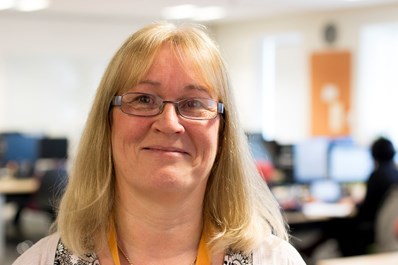
New homes programme with nil grant
The content in this article may now be out of date. Please try searching for a more recent version.
It’s not unusual in the housing sector for development programmes to be driven by site appraisals, hurdle rates, internal rates of return or net present values. But one Midlands based developer is looking at things from a different perspective; that of the customer. Here, Penny Downing, new homes director at Bromford explains how the organisation is able to take this approach and also the rewards it can reap – which includes the refreshing prospect of no reliance on grant funding.
 It’s been three years since we took our new homes strategy to Board, outlining how our future would be as independent from Government grant as possible and I have to say we haven’t looked back. Yes it was scary and many of us questioned how we’d survive by cutting those HCA apron strings, but I’m pleased to say we have – developing over 600 new homes last year. And this is all down to one thing: Developing our new homes programme as an intrinsic part of the customer journey, not simply in parallel to it.
It’s been three years since we took our new homes strategy to Board, outlining how our future would be as independent from Government grant as possible and I have to say we haven’t looked back. Yes it was scary and many of us questioned how we’d survive by cutting those HCA apron strings, but I’m pleased to say we have – developing over 600 new homes last year. And this is all down to one thing: Developing our new homes programme as an intrinsic part of the customer journey, not simply in parallel to it.
“But what do you mean by that, as everyone must consider their customers?” I hear you ask, and yes, of course they do. Every business like ours will have the customer at the heart of its service, but then often the development programmes that sit alongside are so driven by the requirements of delivery timescales, hurdle rates, affordable land sites and Section 106, that actually the customers’ needs drop down the pecking order and you can potentially end up with homes that serve the business, more than the customer. That’s the bit we’ve focused on addressing – how do you ensure that customer need remains front and centre.
Partly it’s because we recognise that new homes are not the driver for our business, they are simply one of the many ways that enable a customer to take control of their lives to overcome hurdles and achieve what they want – and that’s our real purpose.
So, for example, our programme isn’t driven by affordable land sites, it focuses on developing in key areas of operation, where we can not only improve supply, but larger stock concentrations can ensure our relationships and services have more impact.
Although S106 are just the ticket for many organisations, we see that some of the strings and constraints are actually detrimental to our purpose, materially affecting our customers – affordability, bidding wars, restrictions on securitisation to name but a few.
Our products are developed with the organisation’s purpose in mind and we focus on things that might otherwise not exist - our MyPlace product is a great example of this. For many providers supported housing apartments for customers with learning disabilities or mental health needs would be too risky a move in the current climate and even more so when the model relies on no grant. Yet we identified the need and used expertise within the business to find a solution that meets customer need. Today we have 10 of these schemes on the way.
But it’s not just about the type of product; location is driven by customer focus. We look for market led sites to build our retirement living and MyPlace schemes on, so that vibrant communities have a greater chance of coming together, flourishing and ultimately being successful.
And finally, our approach to the financial consideration is also customer-centric. Although our programme obviously has to be financially viable, each scheme doesn’t have to meet standard hurdle rates, as long as it’s fundamental to achieving our overall purpose and the programme balances overall. This isn’t something we’ve had to worry about though as so far all the schemes have met minimum hurdle rates.
Of course none of this is easy. But our experience in supported housing, coupled with outstanding financial strength gives us the confidence to be brave, to spot gaps in the market, to remain focused on the customer and to move away from grant. Surely that can only be a good thing.